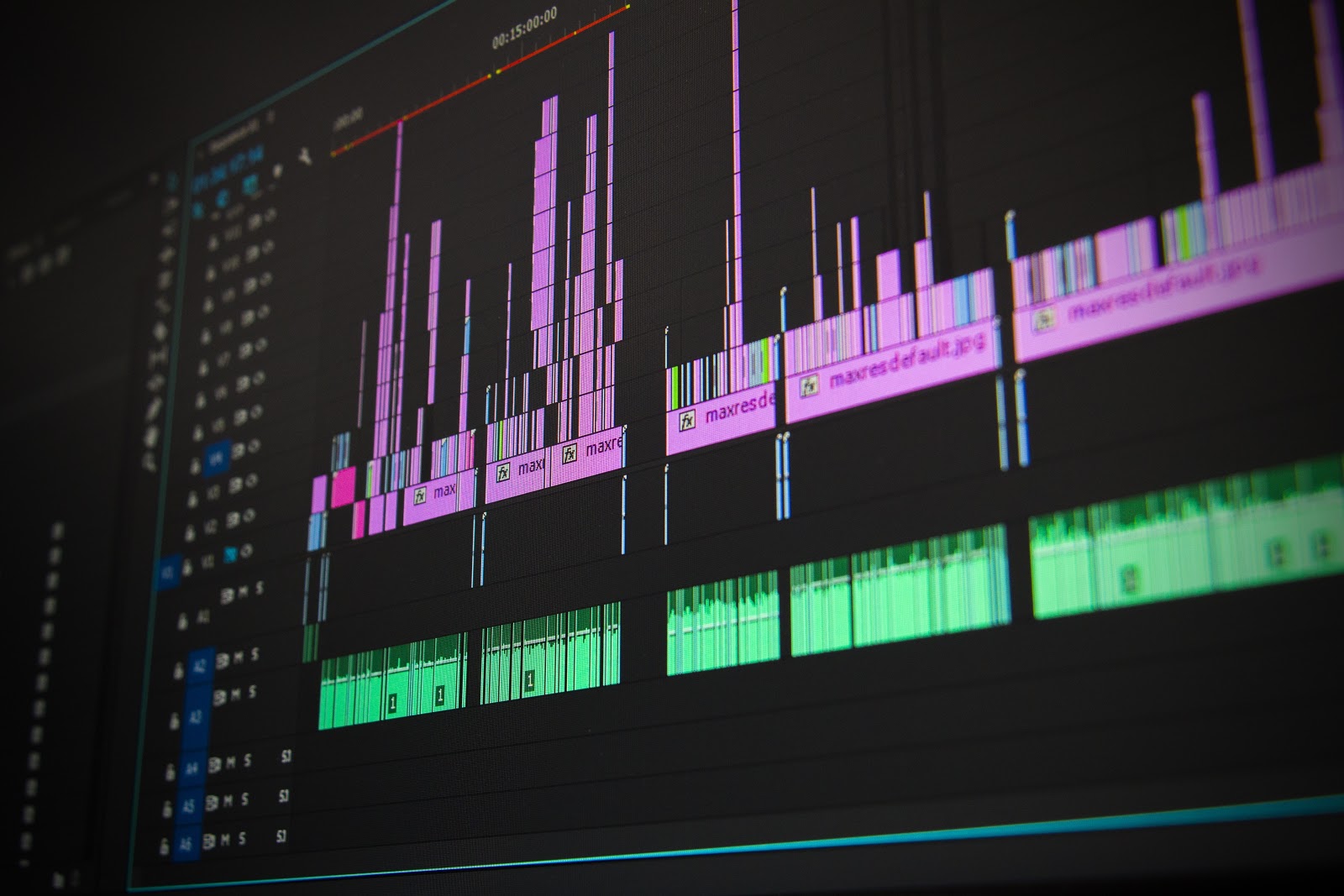Most filmmakers are at least a little familiar with . Maybe you’ve used it out of necessity for work or maybe just to experiment with a new LUT.
Either way, I bet you’re aware of how stock footage can help you fill in gaps on a project or quickly turn around a client request.
Well, royalty-free music is a form of stock music. The overall concept of “stock” music gets a little fuzzy because the music industry is a complex network of rules and regulations. For the sake of cutting out the stuff you don’t need, let’s look specifically at the most straightforward option.
Royalty-free music for videos is a valuable tool that you can use to make your life easier and less stressful. Maybe, more importantly, it’s a way to save yourself thousands of dollars in licensing and royalty fees. (And yes, those items are two sides of the same coin.)
If any of that sounds interesting or helpful, then you’re in luck. The only barrier to entry for finding the best royalty free music for videos is understanding what it is and how to use it.
So we’ll start things off there.
Music Copyright For Beginners
If I was going to write a textbook about royalty-free music for videos, the standard definition would be a bit on the dry side. Royalty-free music is a term for songs that creatives can license (to use in their own projects) without having to shell out monthly royalty fees to the original artist.
Like I said, not particularly exciting.
For a better understanding, think of it this way. At some point in the past, an artist sat down to create a song. That musician might have been a songwriter or a recording artist. Either way, this imaginary someone pursued their passion and made a piece of art.

But there are a lot of things that happen before that song lands on iTunes or Spotify. First, the piece needs to be refined, performed, recorded, mixed and published. And in most cases, multiple people get involved at each stage of the song’s journey from “idea” to “product.”
Popular songs cost a lot to license because you are paying each of those people for the part they played in helping that song get out into the world. A solo artist (like your next-door neighbor) might only have two or three people involved; a popular artist (like Taylor Swift) could have 20 or more.
Whatever that number ends up being, each person should be compensated for the job they did. To prove that, they’ll sign an agreement that gives their permission to use the “piece” of the song that they own.
And that’s the only way to make sure you can legally use that song in your own projects. But even once you get that squared away, you still have more work to do.
Let’s Talk About Royalty Fees
The whole music licensing thing might sound like a lot of steps, but in reality, it’s only one stage of this process. (Yes, it’s clearly an old and somewhat outdated model of doing business.) There is another side to paying for the use of music in videos; the other side of that coin is music royalties.

Once you’ve paid all of the copyright holders and gotten their sign-off on the licensing agreement, you’re done. You are now free to drop the song into your project timeline and get to work on post-production. You can now use that royalty-free music for videos.
But if that project affects your income in any way — say by ranking on YouTube and monetizing views — then you also owe an additional payment to the copyright holders. It doesn’t matter if the video is a commercial project, a short film, or a vlog post — if it affects a channel that generates revenue, you need to share that money with the people whose song played a role in your video.
(And you’ll have to do this for every single song in your videos, by the way.)
Is this all starting to sound like a hassle? Maybe even a full-on filmmaking nightmare?
Remember, music licensing and royalties are how you protect yourself. Sure, you might have to spend a few hundred dollars to license a new radio hit. And there might be royalty payments each month for the foreseeable future. But contrast that to paying tens of thousands of dollars in court fees for breaking copyright law.
At the end of the day, it’s all about keeping the other parties informed and compensated. You’ll agree to a royalty percentage as part of the licensing agreement, and then you just have to follow the terms that everyone signed. Everyone’s happy, and you get to keep making the videos you love without worrying about cease and desist orders.
Royalty-Free Music In A Nutshell
If the whole “paying extra money each month for a song that plays for 5 seconds” sounds like a bummer, you aren’t alone. That’s why other people came together to create a royalty-free music industry — so music artists could get paid and filmmakers could keep the revenue they earn.

Here’s how it works: Instead of reaching out to a major music label, you’ll find a royalty-free music site. (These companies license music directly from artists so you don’t have to.) You can browse their library, find a song you want, and pay a one-time licensing fee to use it.
Remember, these companies have already secured rights to the songs in their libraries. That means they are legally allowed to license those songs, and they might even split the revenue from each sale with the artist. Think of it like subleasing an apartment.
But the real benefit of this model is that you don’t have to worry about royalty payments. Because the music licensing companies paid for a piece of each song, they become almost like a publisher. So you pay one predetermined licensing fee and never have to worry about future payments.
Protect Yourself And Your Work
One big reason to use royalty-free music for videos is to protect yourself from copyright law. There’s nothing worse than finishing a big project, only to receive a cease and desist notice or a copyright claim.
These are “strikes” to take down your video. Worse, they could end up costing you thousands of dollars or even lead to a jail sentence. Music copyright is no joke, and you can’t afford to take it for granted or try to find shortcuts.
The music industry is an absolute juggernaut in the entertainment world, and that’s because successful songs can be worth as much as a Hollywood film budget. Record labels employ legal teams for the sole purpose of sniffing out copyright breakers and going after them.
Again, don’t overlook this note. Take the necessary steps to protect yourself and your work.
Using Royalty Free Music For Videos
By now, you’re probably ready to move on from the legal mumbo jumbo. In fact, I wouldn’t blame you if you were feeling skittish about putting any music in your videos. The threat of a copyright lawsuit — up to $100,000 in fines and/or 10 years in prison — is enough to make anyone nervous.
However, that shouldn’t scare you away from using songs in your videos.
In fact, some people might argue that music is the best pathway for creatives to emotionally connect with audiences. Music affects the human brain in ways scientists are only starting to understand.
That kind of “power” makes music a priceless storytelling tool you can’t afford to miss out on. While names like Hans Zimmer and John Williams would be guaranteed tickets to an excellent soundtrack, not every project has the budget to hire those guys.
In fact, services like InVideo provide an easy way for you to add music directly into your video project without having to worry about buying a unique music license. And with a song catalog that caters to every genre or mood, InVideo is a resource that helps you create better videos — it’s got the tools and files you need, all in one place!

If you’re looking to license songs, royalty-free music is the easiest (and cheapest) way to use great music without having to worry about copyright claims or legal disputes. And more and more creatives are starting to use these companies for their production needs.
I mentioned that the music industry is a huge machine. Entities like that take a lot of time and effort to make even small changes (like the idiom about turning a cruise ship).
But the good news is that other, smaller sub-industries are able to meet those needs. And royalty-free music for videos is just one of those innovations that exist to help filmmakers, ad agencies, and content creators produce the videos they love for a price they can afford.
Thanks to these advances in music licensing, you may not be able to afford heavyweight Hollywood composers, but you can still get cinematic music for your next video.
No matter what else you take away from this, don’t talk yourself out of using music in your projects. You don’t have to settle for generic, uninspired (or just flat-out low-quality) songs on some questionable free website.
You can still find and use great songs that also come from royalty-free music companies. And when it comes to telling stories, inspiring change, and connecting people, you owe it to yourself — and your audience — to deliver the best possible videos you can produce.

